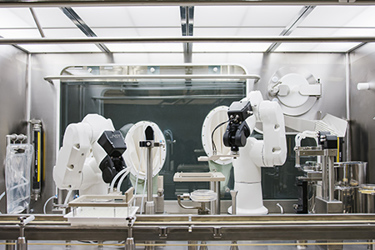The Advantages Of Robotics In Aseptic Fill Finish
By Steven Ng and Spencer Bolte, Automated Systems of Tacoma

Innovations in drug development and manufacturing, as well as the technologies used to bring them to market, have led to exciting discoveries in patient treatment. For example, the ability to tailor therapies to the individual patient by using molecular and genomic drivers is bridging the gap between medicine and unmet clinical needs for rare and orphan diseases. Not only is this drastically changing the pipeline of many companies, but it is also leading to smaller batch sizes and more frequent recipe changeovers, profoundly impacting how drugs are produced. Manufacturers are looking for solutions to optimize operations to improve efficiency and reduce cost while enhancing quality.
In addition, modern drug development platforms must also be equipped to protect drug products from contamination by satisfying cGMP requirements for clinical and commercial sterile injectable products. This is especially applicable during the fill finish phase of biomanufacturing, as this is the last step before a drug product is delivered to the patient. As volume increases, recipe parameters and final containers vary considerably from batch to batch, forcing manufacturers to find a way to accommodate faster product changeover while still protecting sterility. One way to achieve this is by using robotic production lines that can provide flexible aseptic filling and closing of ready-to-use vials, syringes, and cartridges with a single machine, resulting in the overall production speed necessary to remain competitive and cost effective.
Get unlimited access to:
Enter your credentials below to log in. Not yet a member of Cell & Gene? Subscribe today.
